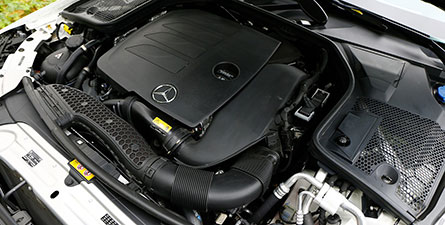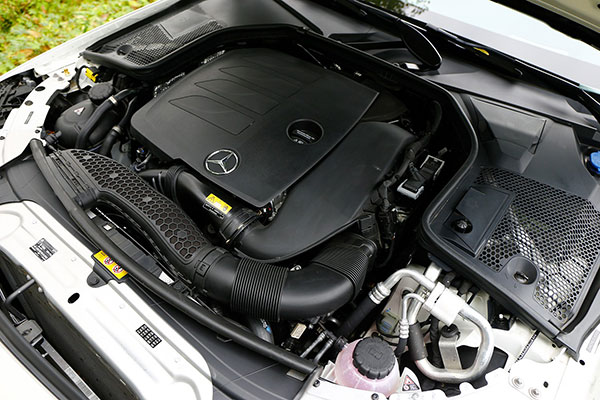News Center

Different engine products are implemented in line production, which is the development trend of the future car manufacturing industry. In engine manufacturing, error-proof technology has a very important significance, if there is no application of error-proof control technology, then the manufacturing process of the product will lead to a lower product qualification rate and a higher manufacturing cost. However, the application of error prevention technology needs to be based on the actual production situation, such as improper use, it may cover up the defects in the processing, resulting in greater waste.
At present, in the machining line and assembly line of the engine, the combination of equipment and manual error prevention is widely used, both simple and practical means of error prevention, and high technology control. Error prevention is applied in the engine manufacturing process model identification, assembly verification, size detection, leak testing, conveying process, workpiece positioning, parts storage and other processes, so as to avoid many failure modes and ensure the manufacturing quality of the engine.

一、Application of anti-error device technology on equipment
In the manufacturing process of auto parts, the application of anti-error device technology on the equipment mainly includes the following categories:
(1) Qualitative error prevention
Through image recognition technology, photoelectric, limit, proximity switch logic control technology to complete error prevention, such as:
Real-time photo comparison: distinguish whether the orientation of the assembled parts is correct;
Sensor sensing detection: According to the shape change of different product models, the automatic machining line will feedback the information induced to the following processing process, so that the following process calls the corresponding processing program and implements the corresponding processing content;
Machining hole detection: the station after drilling or tapping in the machining line, the cutting tool detection and chip washing of the machining hole;
Hard backstop: Identify the front and back flow of the workpiece, such as the feed port of the cylinder block processing automatic line, using the width difference of the front and back end faces of the cylinder block to set the hard backstop to ensure that the front end flow is in the front when the cylinder block enters the machining line
Hard probe: Detect different models of parts, implement different assembly or processing technology, such as probe to detect the shape of parts, implement different assembly, such as hard probe to detect cylinder holes, distinguish 3.0L or 3.4L cylinder block;
Guide block: to distinguish the conveyor guide of parts;
Grating error prevention: through the detection and control of grating, to achieve whether the workpiece is placed in place;
Fixture error prevention: Control whether the assembly parts are placed in place on the fixture to prevent errors.
(2)Quantitative error prevention
Error prevention is achieved by measuring probe induction or by measuring technology through gas-electric conversion (gas flow into electricity), such as:
Ruby probe detection data feedback: The ruby probe detects the inner diameter of the pressed valve seat ring to distinguish the part from the 3.0L or 3.1L cylinder head of the auto parts;
BTS tool length detection: CNC machining center tool detection can prevent the wrong length of the tool installed in the tool library, prevent the phenomenon of broken tools during processing, reduce the first processing or processing waste;
Stomatal pressure detection on the positioning surface: error prevention measures to confirm the correct position of the workpiece;
Leakage testing: online testing of automotive parts such as cylinder head, cylinder block oil passage and water channel, etc., to control leakage parts into the next process;
Measuring the diameter of the gage along the line: this is widely used in the station after boring and reaming in the automatic machining line, to 100% control the appearance of unqualified products;
Torque control: The tightening degree of auto parts such as many bolts is controlled by the torque gun.
(3) Error prevention for flutter function
Through the vibration of the vibrator, the parts with the continuous vibration and transport to determine the direction of the parts is correct or not, only when the parts are in the correct position and direction, they can enter the feeding track; The parts with the wrong position direction fall into the parts flutter box, so as to prevent the wrong feed direction of the parts and avoid the purpose of scrapping the workpiece, such as: the direction verification of the cylinder CAM shaft bushing to prevent the bushing from pressing back; The direction of pressure installation of the water channel cover of the cylinder block is wrong.

二、Material error prevention
Error prevention of workpiece holding equipment: the implementation of error prevention technology for the processing of the completed product holding, directional positioning, to prevent workpiece collision with each other, to ensure the surface quality of processed parts;
Color code error prevention: The storage rack of parts in the assembly area, using color code error prevention.
三、Manual error prevention
(1)Establish standard operation SOS: for example, the finished products, products to be processed, material waste, industrial waste and other off-line parts in the process of processing must immediately hang different color identification labels in accordance with the processing specifications of various parts (see Figure 9), set the normal use durability of tools, and establish TPM and PM maintenance systems for error prevention devices.
(2)Tool installation error prevention: the operator adjusts the tool according to the tool change specification, such as checking the tool number and length of the tool to compare the length, etc., to prevent unqualified parts caused by errors in the tool adjustment;
(3)Workpiece eye inspection and measurement error prevention: the operator inspects and measures the defects existing in the processing of the workpiece and the blank itself according to the inspection frequency, removes the unqualified workpiece and makes it offline at the station.
(Source: Automotive Manufacturing Network)
Return to Overview